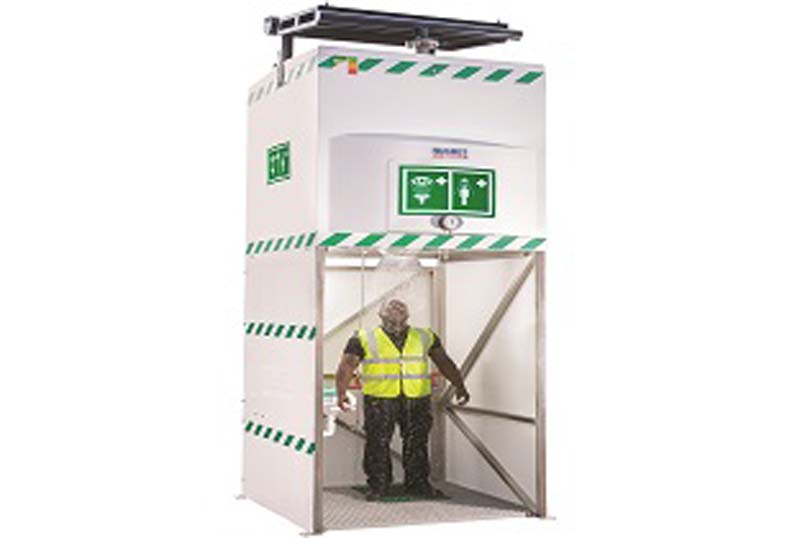Comply with crucial safety standards and protect worker safety with tepid water solutions from Hughes Safety Showers
Imagine a situation in which a worker spills a caustic agent such as bleach and suffers immediate chemical burns. They follow procedure and rush to the nearest emergencyshower to activate it, but the water has heatedup to above 38C (100F) due to solar radiatioand high ambient temperatures. The water scalds the casualty, adding temperature burns to their chemical injury.
Blood vessels close to the surface of the body dilate when exposed to heat to allow more blood flow to the area. This removesheat from the skin and prevents the core temperature from rising too high and directs blood away from vital internal organs causing cardiovascular strain. In a chemical spill or splash situation this process allows more chemicals to be absorbed through the skin, worsening the injury, and causing potential internal damage.
Additionally, on realising the water is too hot, the casualty may jump out of the shower too early, leaving chemicals on their skin and/or clothes. This residual chemical can still cause tissue damage.
Whether the water is scalding or freezing, the natural human reaction is to withdraw from the temperature extreme to protect the body. ANSI Z358.1-2014, the international standard for emergency safety showers, recommend a flow of water for at least 15 minutes to completely rinse away most hazardous chemicals. The only way to ensure this length of time is possible is to control the water temperature in the tepid range of 16-38C.
The provision of tepid water in hot climates, such as those experienced in the Middle East, can be challenging due to solar radiation heating the water within the pipes, or water tank, of a safety shower to dangerous levels. There are several options available to combat this risk and ensure safety showers provide tepid water upon activation.
Self-contained and resilient, tank fed safety showers fitted with a chiller are often thesimplest and most comprehensive way to achieve compliance. A large overhead tank can store 1500 litres of potable water and deliver an ANSI compliant 76 litres of waterper minute. When fitted with a chiller or cooling system the water within the tank can be maintained within the tepid range. Chillers are available for use in both hazardous and non-hazardous areas, and where no power is available the innovative Hughes Zero Power Cooler® is ideal. The system cools during the night when the ambient temperatures are lower, using the reduced ambient temperature to draw heat from the water in the tank.
During the day the system is designed to insulate against the higher daytime ambient temperatures preventing the water from getting too hot.
Alternatively, self-draining safety showers are designed to drain away water from the standpipe after use, removing the risk of water overheating and scalding the next user upon activation.
For further information on industrial safetyshowers and eye washes suitable for use in hot climates visit the Hughes Safety Showers booth #8430, at ADIPEC 2022 from 31st October to 3rd November, or visit www.hughes-safety.com






